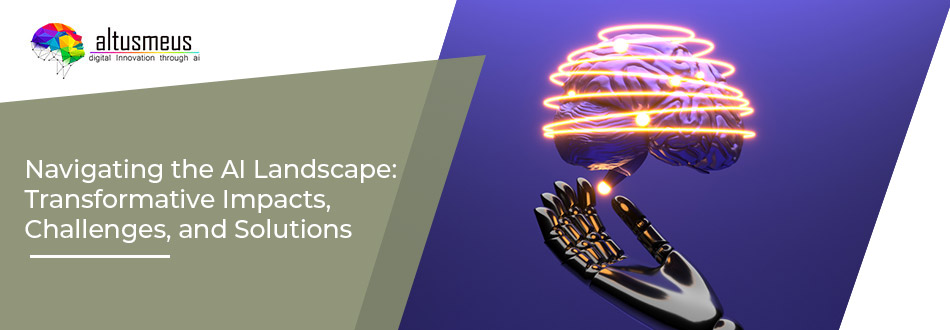Regardless of one’s personal views on technology, it is crucial to acknowledge and embrace the universal truth that it is really important and makes our lives easier and better. Just as tangible elements around us undergo transformations, technology also evolves over time, often at a rapid pace, driven by the high stakes involved. A prime example is the mobile phone industry, where staying at the forefront of the latest technology and innovation provides a competitive edge.
AI Dilemma
Throughout history, numerous technologies have disrupted established norms in various industries, ranging from the printing press and typewriters to computers and the internet. The latest addition to this lineage of disruptive technologies is artificial intelligence (AI). What sets AI apart is its unparalleled versatility, with applications that extend across diverse domains. Unlike its predecessors, AI has the potential to impact businesses and professions in ways previously unparalleled due to its limitless range of applications.
Many businesses find themselves grappling with questions about the role AI should play in their operations amidst the ongoing AI boom. In this blog, my aim is to provide you with answers that can guide you in making informed decisions, ensuring that you take the right steps to optimize the impact of AI on your business or profession.
The Dual Impact of AI on Industries
So, if we objectively observe the changes AI is bringing to various businesses and professional fields—without succumbing to fear of AI or change—we can discern that its impact will be both positive and negative. It is advisable to contemplate and strive towards harnessing the positive impacts, making AI an ally in your business and professional journey. Opposing it is not an option you can afford for the sake of your business and profession.
Positive Impacts:
- Enhanced Decision-Making: Every business, along with its related stakeholders, including potential customers, partners, government, and competitors, generates a vast amount of data. Making sense out of this huge data may seem impossible, but with AI tools, businesses can gain valuable insights into complex datasets, helping them make quicker and more accurate decisions.
- Empowering Workforce: AI, crafted by scientists, serves as a tool to augment and enhance the capabilities of humans utilizing it. It is imperative for businesses to grasp this realization early on, as AI is designed to complement the existing skills and experiences within the workforce. By integrating AI, businesses can unlock new levels of productivity, effectiveness, and efficiency in handling complex tasks, ultimately empowering their teams to achieve greater success.
- Effective and personalized marketing: As mentioned earlier, AI possesses the capability to analyze vast amounts of data, enabling real-time examination of consumer behavior. For instance, when a customer visits a website and conducts a search, AI comprehends the person’s location, income level, preferences, and more, extrapolated from the searched items and browsing behavior. Subsequently, AI can present the customer with the right product, aligning with their intended purchase. Moreover, by discerning individual preferences and trends, companies can customize their messaging, resulting in more effective and resonant communication with their audience.
- Improved Cybersecurity Measures: As the landscape of cyber threats evolves into more sophisticated forms, AI emerges as a critical asset in fortifying cybersecurity. With its advanced algorithms, AI takes on the pivotal role of detecting and responding to security breaches in real-time. This proactive approach not only safeguards businesses against potential cyber attacks but also ensures the protection of sensitive data. The integration of AI marks a proactive defense mechanism, enhancing overall cybersecurity resilience.
- Streamlined Supply Chain Management: AI can optimise supply chain processes by predicting demand, identifying bottlenecks, and enhancing logistics. This ensures a smooth flow of goods and services, reducing delays, minimizing inventory costs, and ultimately improving overall supply chain efficiency.
- Personalized Learning and Development: In the sphere of education and professional training, AI emerges as a transformative force, tailoring learning experiences to individual needs. Adaptive learning platforms leverage sophisticated AI algorithms to assess each learner’s strengths and weaknesses, offering personalized content and pacing. This approach optimizes educational outcomes, enhancing the knowledge and skills of learners. As a result, organizations become more effective and efficient in their operations, thanks to the refined capabilities of their workforce fostered by personalized and adaptive learning experiences.
- Strategic Workforce Utilization: AI serves as a catalyst for strategic workforce management by automating mundane tasks and optimizing resource allocation. Businesses can harness AI-powered tools to reduce manual efforts, enabling employees to focus on more complex and value-driven aspects of their roles.
- Tailored Customer Engagement: AI-driven technologies redefine customer interactions through personalized engagement. Employing chatbots, recommendation engines, and virtual assistants allows businesses to tailor their services to individual customer preferences, elevating overall satisfaction and loyalty.
- Pioneering Research and Development: AI fuels innovation by facilitating advanced research and development initiatives. Businesses can leverage AI algorithms to pinpoint market gaps, predict consumer needs, and drive the creation of cutting-edge products and services, staying ahead in a competitive landscape.
- Financial Efficiency Through Automation: Through the implementation of automation and predictive analytics, businesses achieve substantial cost savings. AI tools play a pivotal role in forecasting demand, preventing inefficiencies, and streamlining financial processes, contributing to overall financial efficiency and stability.
Negative Impacts:
- Rendering Old Technology Obsolete: While there were once effective technologies and tools that greatly assisted professionals and businesses, the advent of the AI boom has led to the obsolescence of some of them. AI has streamlined processes to such an extent that individuals with minimal experience can accomplish tasks effortlessly through simple prompts.
- Job Displacement Concerns: The extensive integration of AI raises apprehensions about the automation of certain job roles, potentially leading to job displacement. As AI takes over routine tasks, there’s a possibility of certain employees and businesses being affected by the obsolescence of their specific work.
- Security and Privacy Concerns: The increased reliance on AI involves handling vast amounts of sensitive data. Businesses face challenges in ensuring the security and privacy of this information, raising concerns about data breaches and cyber threats.
- Increasing Dependence on AI: With the rising prevalence of AI use, a potential consequence emerges—reliance on AI to handle cognitive tasks. As people delegate thinking responsibilities to AI, there’s a risk of diminishing their individual skills, creativity, and effectiveness in their roles, especially when detached from AI support. This growing dependence may have adverse effects on individuals, potentially hindering their overall capabilities if detached from AI assistance.
- Initial Implementation Costs: While AI promises long-term benefits, the initial costs of implementation can be significant. Due to budget constraints, small businesses and professionals may face challenges in adopting AI technologies.
Overcoming AI Negative Impacts:
- Addressing Data Security Challenges: AI challenges in data security can be effectively mitigated by employing AI itself. Just as ‘iron cuts iron’ and ‘diamond cuts diamond,’ leveraging AI for data protection becomes a proactive solution, ensuring robust security measures within the digital landscape.
- Tackling Technology Obsolescence: To overcome challenges related to technology becoming obsolete, the key lies in the integration of AI. Paramount to guaranteeing sustained relevance and effectiveness, embracing AI within tools and technology proves crucial in adapting to the dynamically evolving landscape.
- Mitigating Job/Work Displacement: Continuous learning and the strategic incorporation of AI tools provide a powerful solution to the challenge of job/work displacement. Acquiring new skills and utilizing AI to enhance efficiency ensures that both businesses and their employees remain indispensable, thereby averting the risk of replacement by AI. Additionally, using AI judiciously addresses the problem of dependency, fostering a balanced integration that enhances overall effectiveness.
Conclusion
In the dynamic realm of artificial intelligence, our journey through its transformative impacts and challenges unveils a complex landscape. From enhanced decision-making and streamlined supply chains to concerns of job displacement and increasing dependence, AI’s dual nature is evident. However, recognizing the power of adaptation and strategic incorporation, businesses can harness AI to overcome challenges. The road ahead involves a balanced embrace of AI’s potential, ensuring that it becomes an ally rather than a disruptor. In this ever-evolving technological narrative, the proactive integration of AI serves as a compass, guiding businesses and professionals towards sustained success in a digitally driven future.





